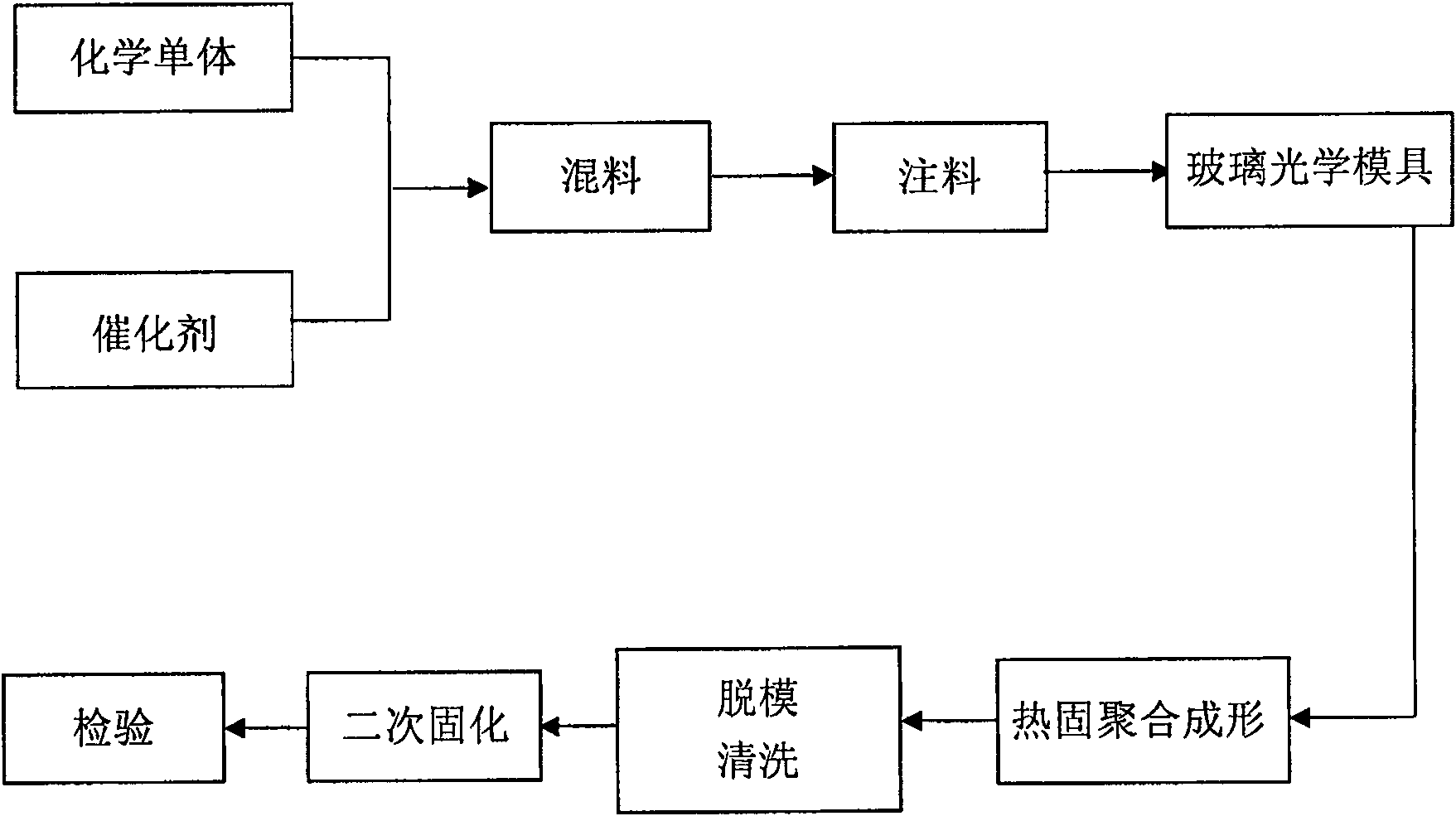Shock resistance optical resin lens and method of manufacture
A technology of optical resin lenses and manufacturing methods, applied in optics, optical components, optical components, etc., can solve problems such as low technical starting point, high dispersion, poor impact resistance, etc., to eliminate internal polymerization stress, ensure optical quality, and ensure optical quality. The effect of precision
- Summary
- Abstract
- Description
- Claims
- Application Information
AI Technical Summary
Problems solved by technology
Method used
Image
Examples
Embodiment 1
[0026] First weigh 9.4Kg of the chemical monomer A component, seal and stir at room temperature (22°C-28°C) for 11 minutes, add 14g of dibutyltin dichloride catalyst and then seal and stir at room temperature (22°C-28°C) 30 minutes, then cool down to 8°C in an ice-water bath and maintain this temperature, add 10.6Kg of chemical monomer B component, stir at 8°C under vacuum (vacuum degree at -0.08Mpa) for 35 minutes, then stop stirring and keep the vacuum degree at - After 10 minutes at 0.08Mpa, keep the temperature at 8°C, pressurize it with nitrogen to 0.06Mpa, filter through a polytetrafluoroethylene filter membrane with a pore size of 0.3μm, and inject it into the mold (350 pieces) that has been closed. Thermosetting polymerization molding in the computer temperature-controlled curing furnace of the device. The curing temperature change steps are as follows: the initial temperature is 35°C, keep warm for 2 hours, rise to 50°C after 3 hours, rise to 70°C after 3 hours, then ...
Embodiment 2
[0028] First weigh 10Kg of the chemical monomer A component, and then seal and stir at room temperature (22°C-28°C) for 10 minutes, then add 13g of dibutyltin dichloride catalyst and then seal and stir at room temperature (22°C-28°C) for 30 minutes. Minutes, then cool down to 6°C in an ice-water bath and maintain this temperature, add 10Kg of chemical monomer B component, stir at 6°C under vacuum (vacuum degree at -0.09Mpa) for 40 minutes, then stop stirring and keep the vacuum degree at -0.09Mpa After 12 minutes, keep the temperature at 8°C, pressurize it with nitrogen to 0.08Mpa, filter it through a 0.3μ polytetrafluoroethylene filter membrane, and inject it into the mold that has been closed (360 pieces). Thermosetting molding in a computer temperature-controlled curing furnace, the curing temperature change steps are: the initial temperature is 35 ° C, heat preservation for 1 hour, rise to 45 ° C after 4 hours, rise to 65 ° C after 4 hours, then heat preservation for 4 hour...
PUM
| Property | Measurement | Unit |
|---|---|---|
| refractive index | aaaaa | aaaaa |
| refractive index | aaaaa | aaaaa |
Abstract
Description
Claims
Application Information
 Login to View More
Login to View More - R&D
- Intellectual Property
- Life Sciences
- Materials
- Tech Scout
- Unparalleled Data Quality
- Higher Quality Content
- 60% Fewer Hallucinations
Browse by: Latest US Patents, China's latest patents, Technical Efficacy Thesaurus, Application Domain, Technology Topic, Popular Technical Reports.
© 2025 PatSnap. All rights reserved.Legal|Privacy policy|Modern Slavery Act Transparency Statement|Sitemap|About US| Contact US: help@patsnap.com

